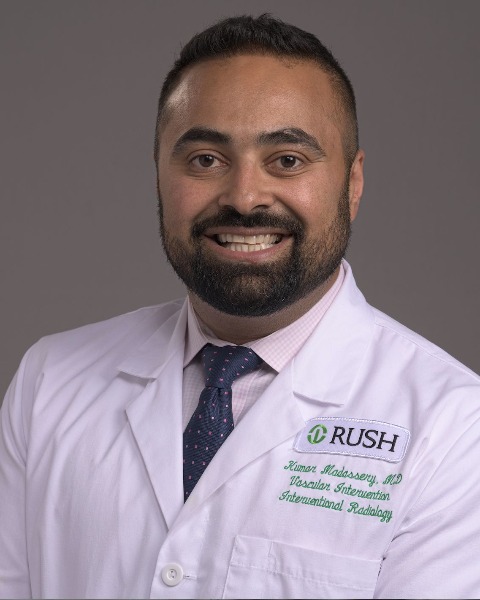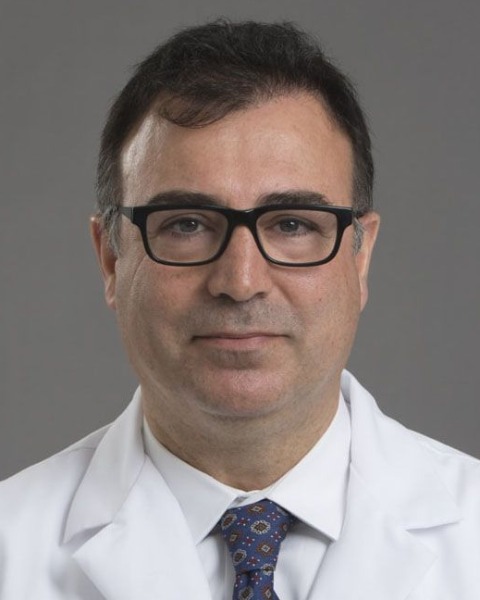Interventional Oncology
Comparing Future Liver Remnant Growth Following Double Vein Embolization in Patients who are Surgically Naïve Versus those that have Undergone Prior Partial Left Hepatectomy

Dustin J. Gulizia, MD (he/him/his)
VIR Fellow
Rush University Medical CenterDisclosure(s): No financial relationships to disclose
- CV
Chetan Velagapudi, MD
IR/DR resident physician
Rush University Medical Center - JC
Joshua Condon, B.S.
Medical Student
Rush University Medical Center - BK
Bobak Khalili, B.S.
Medical Student
Rush University Medical Center - RR
Rehan Riaz, MD
Assistant Professor of Radiology
Rush University Medical Center 
David Tabriz, MD, MBA
Assistant Professor of Radiology
Cleveland Clinic Florida
Kumar Madassery, MD
Associate Professor, Vascular and Interventional Radiology
Rush University Medical Center, Rush Oak Park- UT
Ulku Turba, MD, FSIR
Professor
Rush University Medical Center 
Bulent Arslan, MD, FSIR
Professor and Interim Chair
Rush University Medical Center
Jordan Tasse, MD
Physician
Rush University Medical Center
Presenting Author(s)
Author/Co-author(s)
DVE is performed by embolizing both the ipsilateral right portal and hepatic veins prior to planned hepatectomy. In some instances, a smaller 1st stage resection involving resection +/- ablation of the left hepatic lobe tumors prior to DVE, with right/extended right hepatectomy occurring after DVE and appropriate FLR growth. We are investigating whether the staged approach insults the liver parenchyma and hinders future liver remnant (FLR) hypertrophy. We compare the results of DVE on FLR growth in patients with prior partial left hepatectomy versus those that are surgically naïve.
Materials and Methods: All patients who underwent DVE at our institution between 2017 and 2022 were reviewed. Liver volumetry was evaluated by CT or MR prior to and following DVE. Subsequent growth of FLR was calculated and compared between those who underwent liver resection only after DVE, and those who underwent a surgical resection prior to liver embolization.
Results:
A total of 18 patients underwent DVE. Thirteen patients received DVE prior to any liver resection, and five patients underwent a partial left hepatic tumor resection +/- thermal ablation prior to DVE. Mean patient age was 57 years. Median follow up imaging to assess liver growth was 16 days after DVE.
Mean FLR volume increase was 264mL surgical naïve patients and 204mL for patients who underwent resection prior to DVE. The mean percentage of FLR to total liver volume (TLV) rose from 23.1% to 33.9% after embolization for the DVE-first cohort, compared with a rise of 20.5% to 28.6% for the resection-first group. Finally, the kinetic growth rate was 6.0% per week compared with 4.4% per week, respectively.
All 13 DVE-first patients underwent subsequent extensive liver resection at a median of 19 days after embolization. Only 2/5 patients underwent the planned 2nd stage extensive liver resection in the partial hepatectomy-first cohort.
Conclusion: This data suggests a liver resection and/or ablation prior to DVE may decrease the efficacy of the embolization procedure and subsequent FLR hypertrophy. More studies with increased sample sizes are needed for further evaluation.

.jpg)
.jpg)
.png)
.jpg)
.png)
.png)
.png)
.png)
.png)